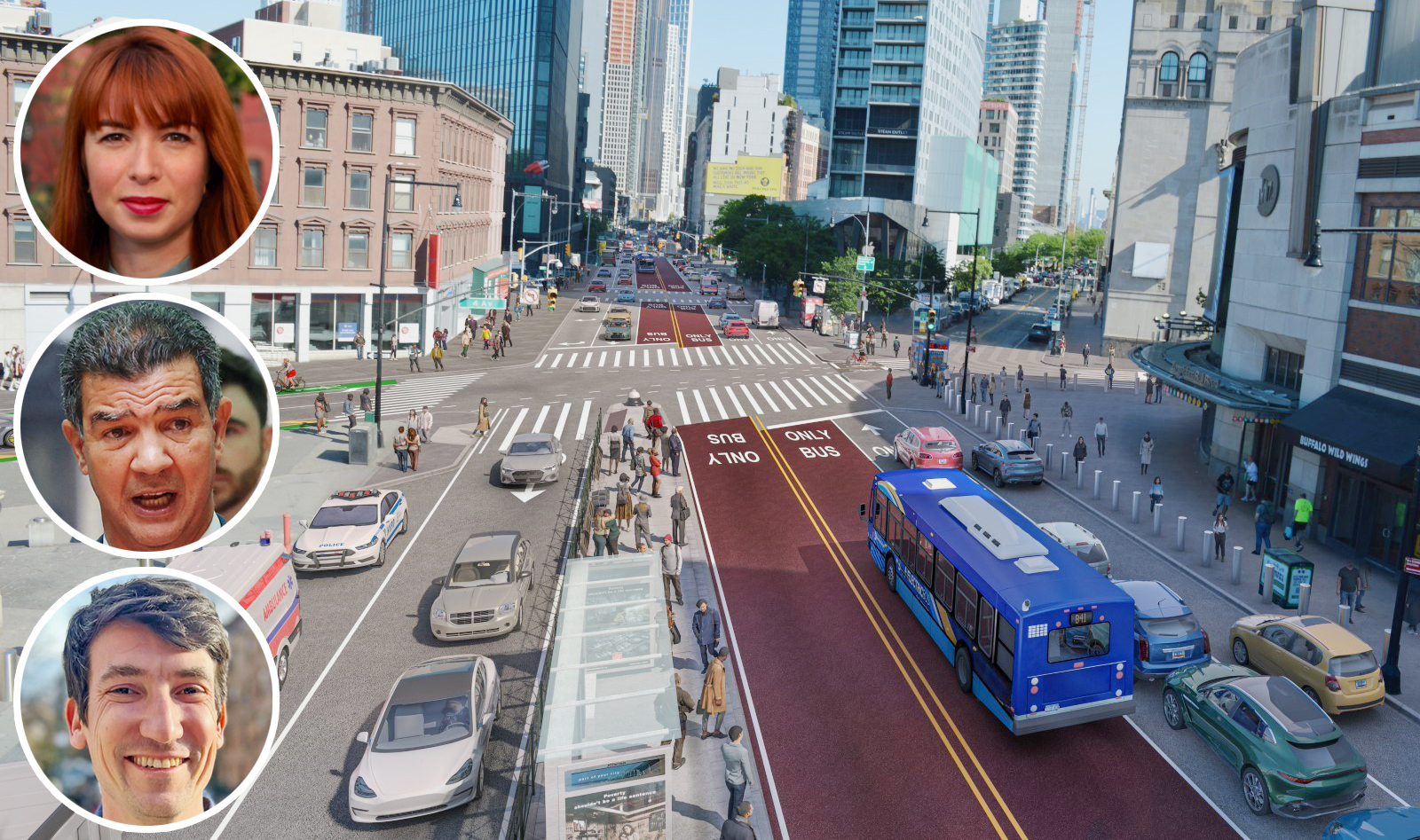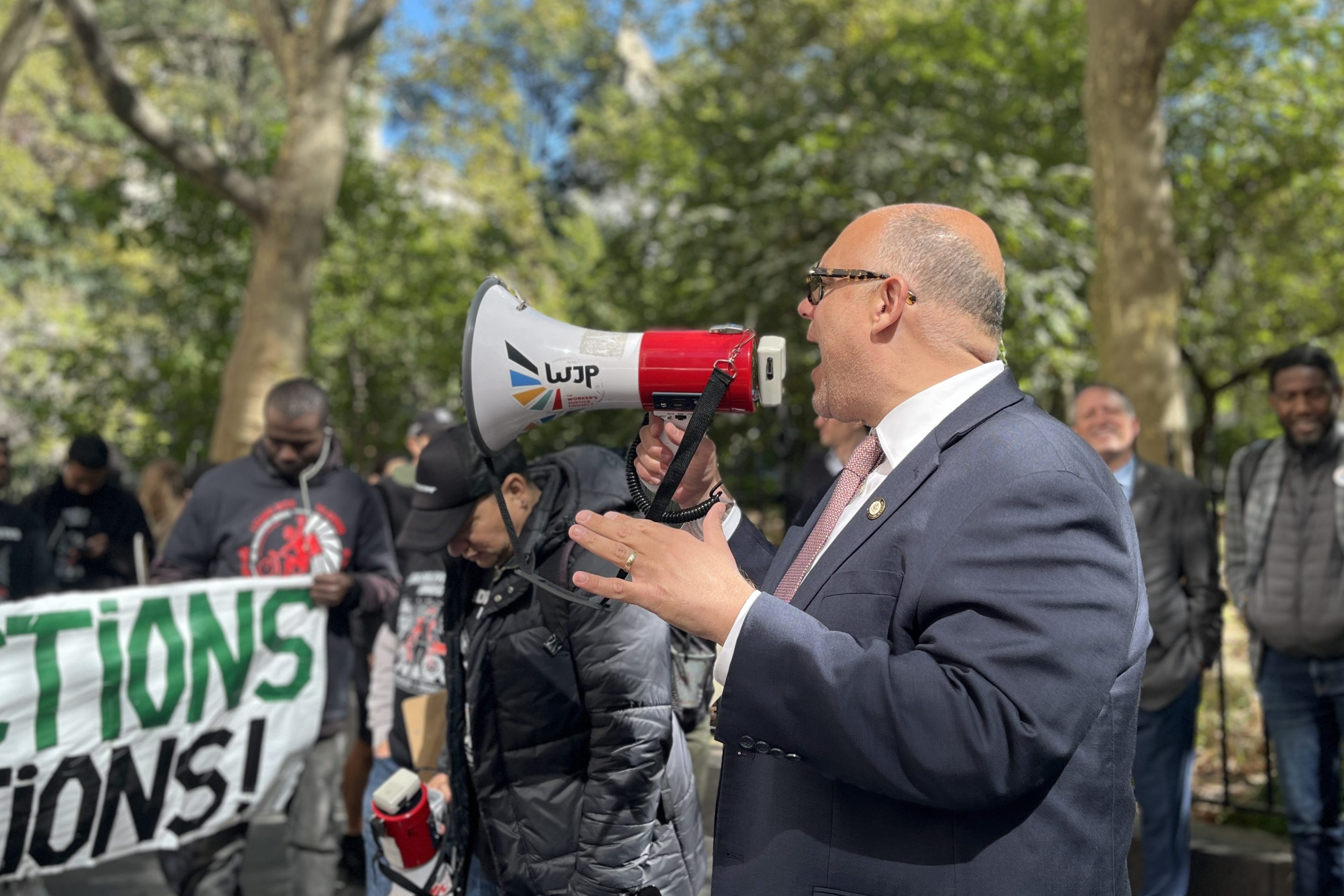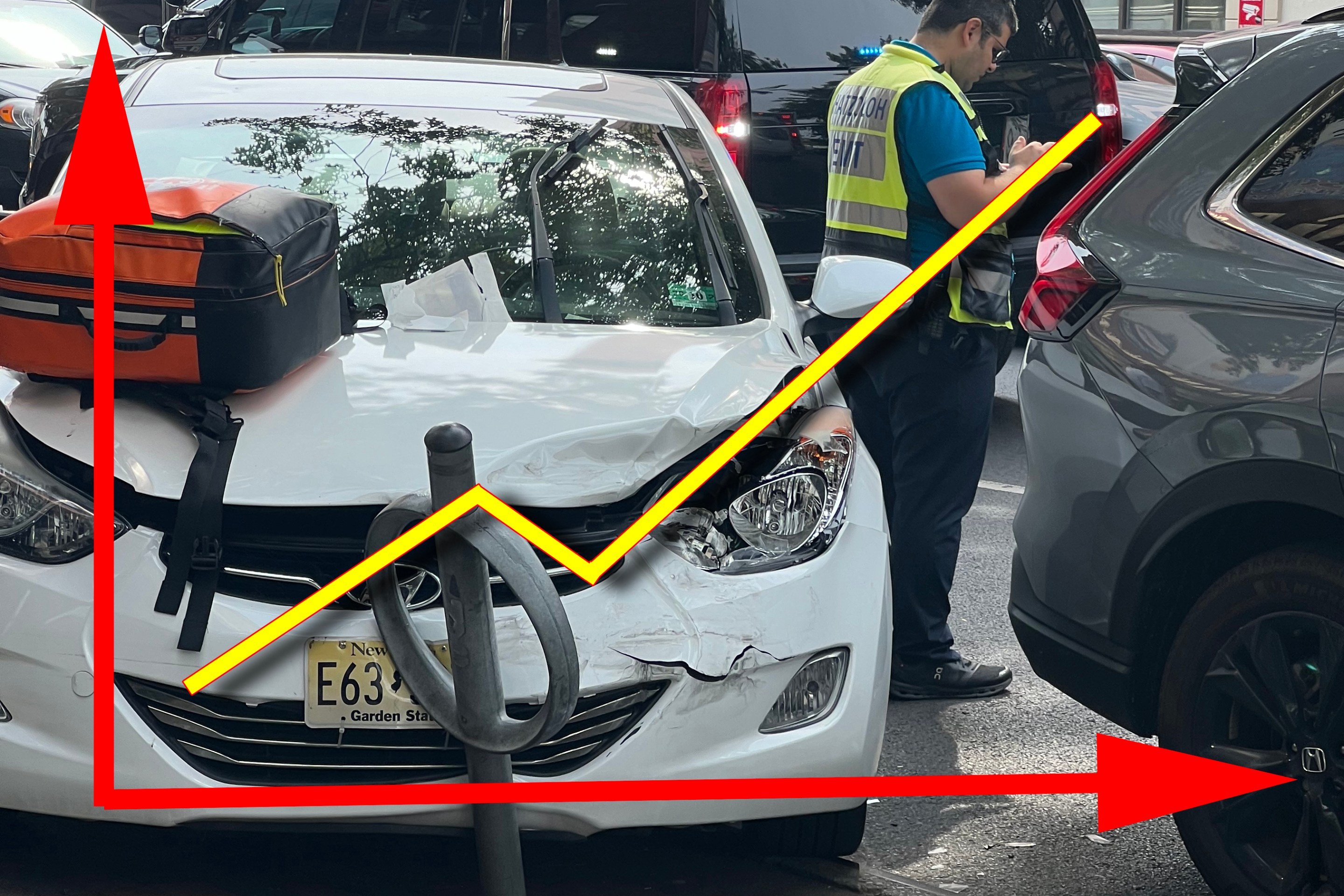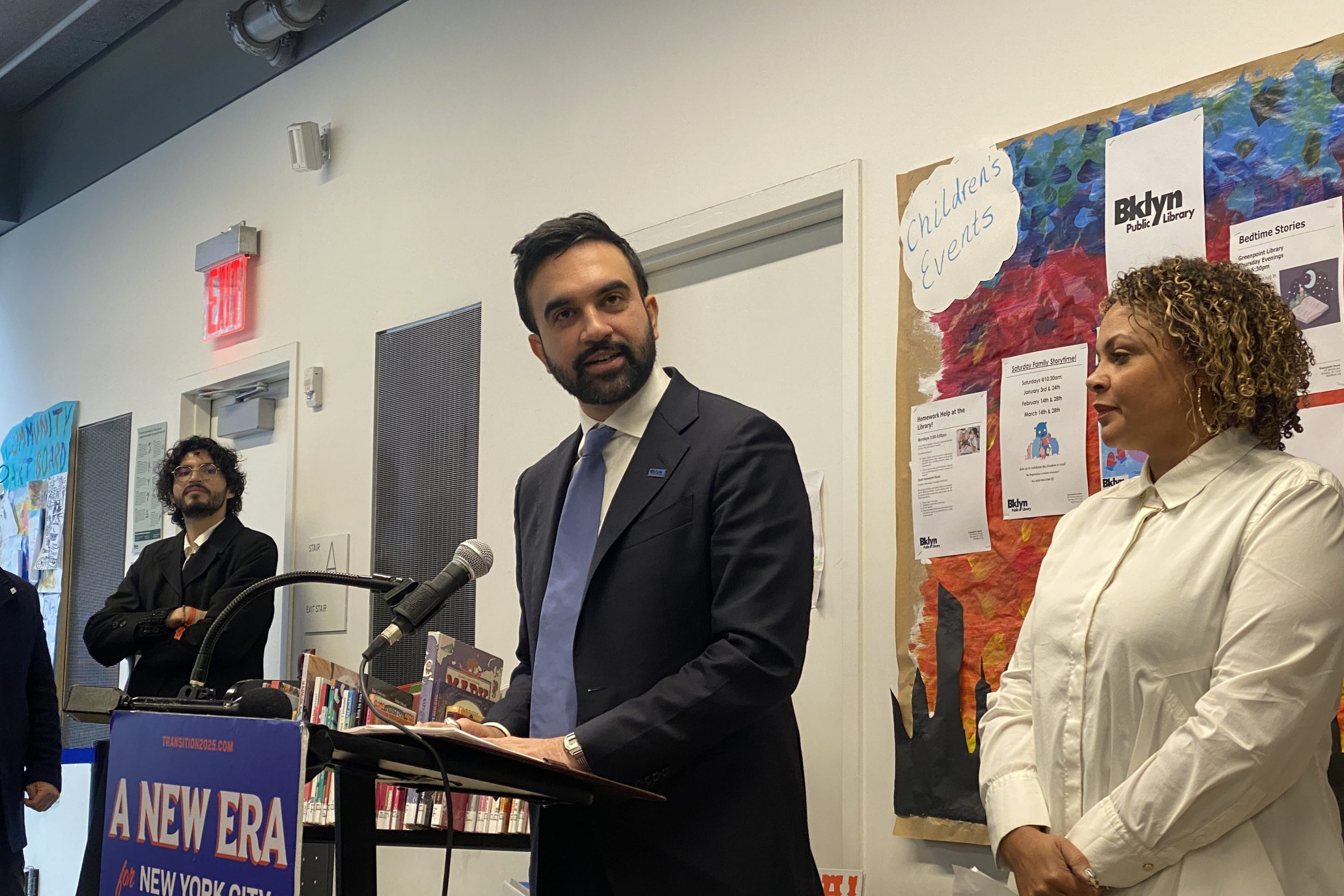If you’re reading this from Brooklyn's B41 bus, chances are you are stuck in stop-and-go traffic on Flatbush Avenue. The B41 is in the top-10 busiest bus routes in the entire city, yet from Downtown Brooklyn to the marshes of Marine Park, any Brooklynite today would tell you that Flatbush doesn’t work well for anyone, whether you’re on the bus, in a car, or trying to make a delivery to a local business.
This is especially true for the gridlocked section of Flatbush north of Grand Army Plaza, where traffic speeds are the slowest and where it can take what feels like an eternity just to move a few feet.
The New York City Department of Transportation has put forward a bold plan to fix this clogged stretch of Flatbush from Livingston Street to Grand Army with a redesign that will move far more people much more quickly than it does today. And we can do that while making the road safer for everyone by turning a highway-like design into a calm, people-first street, with 28,800 square feet of new pedestrian space, and new designated loading zones for the deliveries that need to be made every day.
The plan for Flatbush will free tens of thousands of daily bus riders from traffic and encourage even more people to opt for fast, reliable transit service — just like we did with the 14th Street busway, where speeds and ridership have both surged and traffic congestion on the corridor virtually disappeared.
This plan will also deliver critical safety upgrades to many of Brooklyn’s intersections with the highest numbers of serious pedestrian injuries and pedestrian deaths, including the notorious crossing at Atlantic Avenue.
Flatbush is one of the busiest bus routes in Brooklyn and deserves dedicated bus lanes. DOT has developed a well-thought plan that considers the needs of everyone, while putting bus riders first.
Once it’s in place, we’ll have the opportunity to study its effects and apply lessons here and in future projects, including further south on Flatbush Avenue. Meanwhile, riders who’ve been stuck waiting for better service for decades will finally get a break. And of course, safety improvements can’t come soon enough — no one should risk their life just to get around. Overall, this transformative project will create the closest experience to Bus Rapid Transit in New York City, under a quick construction timeline, and help save lives.
Center-running lanes and pedestrian boarding islands are standard around the world and will deliver much better bus service for New Yorkers.
We look forward to celebrating this great project in the very near future and to continued ambitious changes to our streets to make them safer and more convenient for riders, pedestrians, and cyclists across the city.






